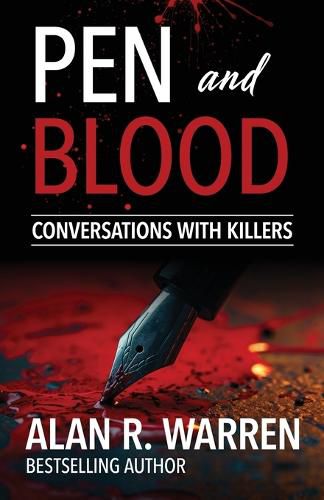Readings Newsletter
Become a Readings Member to make your shopping experience even easier.
Sign in or sign up for free!
You’re not far away from qualifying for FREE standard shipping within Australia
You’ve qualified for FREE standard shipping within Australia
The cart is loading…






This title is printed to order. This book may have been self-published. If so, we cannot guarantee the quality of the content. In the main most books will have gone through the editing process however some may not. We therefore suggest that you be aware of this before ordering this book. If in doubt check either the author or publisher’s details as we are unable to accept any returns unless they are faulty. Please contact us if you have any questions.
The third serial killer who is covered in this book is David Shearing, who murdered a family of six people while the family was camping with girls in British Columbia at Wells Gray Park, Canada, in August of 1982. All three of these murderers had the same primary focus, which was to sexually assault children before murdering them. All three of these murderers wanted to isolate their victims before committing their crimes against them.
The one significant difference between Shearing, Brady, and Port was that he was willing to murder others to get to his primary victims, the children. These other victims, who were in the way of Shearing to get to the children, were just collateral damage to him. It didn't matter who they were or what they did. Shearing needed to get them out of the house to reach his chosen victims.
When Shearing murdered other people to reach his primary targets, two young girls, for sexual assault purposes, all of these criminal acts are usually viewed as a continuous event. This also means that the deaths that occurred have a strong connection to the sexual assault and may even be a necessary part of his planned sexual assault.
In legal terms, what's considered is the overall context of the crimes, not just the immediate cause of death. If it was Shearing's primary intention to assault the two young girls sexually, and he had to commit homicide to do it, then it is considered first-degree murder. Only in this particular case he would only be charged with second-degree murders in all six counts, as detectives had no evidence of how or when these murders took place.
This would be the significant difference between Shearing's case and the other two. They all needed to act out their fantasy with the children while being alone, but Shearing was willing to murder the others who were with the children to complete his assault. But all three of these killers needed to do it while they were alone with the children.
Another even more critical difference in the Shearing murder case is that, unlike Port and Brady, Shearing goes up for a chance to get parole every two years. Do we think that those who sexually assault children get cured while in prison?
$9.00 standard shipping within Australia
FREE standard shipping within Australia for orders over $100.00
Express & International shipping calculated at checkout
This title is printed to order. This book may have been self-published. If so, we cannot guarantee the quality of the content. In the main most books will have gone through the editing process however some may not. We therefore suggest that you be aware of this before ordering this book. If in doubt check either the author or publisher’s details as we are unable to accept any returns unless they are faulty. Please contact us if you have any questions.
The third serial killer who is covered in this book is David Shearing, who murdered a family of six people while the family was camping with girls in British Columbia at Wells Gray Park, Canada, in August of 1982. All three of these murderers had the same primary focus, which was to sexually assault children before murdering them. All three of these murderers wanted to isolate their victims before committing their crimes against them.
The one significant difference between Shearing, Brady, and Port was that he was willing to murder others to get to his primary victims, the children. These other victims, who were in the way of Shearing to get to the children, were just collateral damage to him. It didn't matter who they were or what they did. Shearing needed to get them out of the house to reach his chosen victims.
When Shearing murdered other people to reach his primary targets, two young girls, for sexual assault purposes, all of these criminal acts are usually viewed as a continuous event. This also means that the deaths that occurred have a strong connection to the sexual assault and may even be a necessary part of his planned sexual assault.
In legal terms, what's considered is the overall context of the crimes, not just the immediate cause of death. If it was Shearing's primary intention to assault the two young girls sexually, and he had to commit homicide to do it, then it is considered first-degree murder. Only in this particular case he would only be charged with second-degree murders in all six counts, as detectives had no evidence of how or when these murders took place.
This would be the significant difference between Shearing's case and the other two. They all needed to act out their fantasy with the children while being alone, but Shearing was willing to murder the others who were with the children to complete his assault. But all three of these killers needed to do it while they were alone with the children.
Another even more critical difference in the Shearing murder case is that, unlike Port and Brady, Shearing goes up for a chance to get parole every two years. Do we think that those who sexually assault children get cured while in prison?